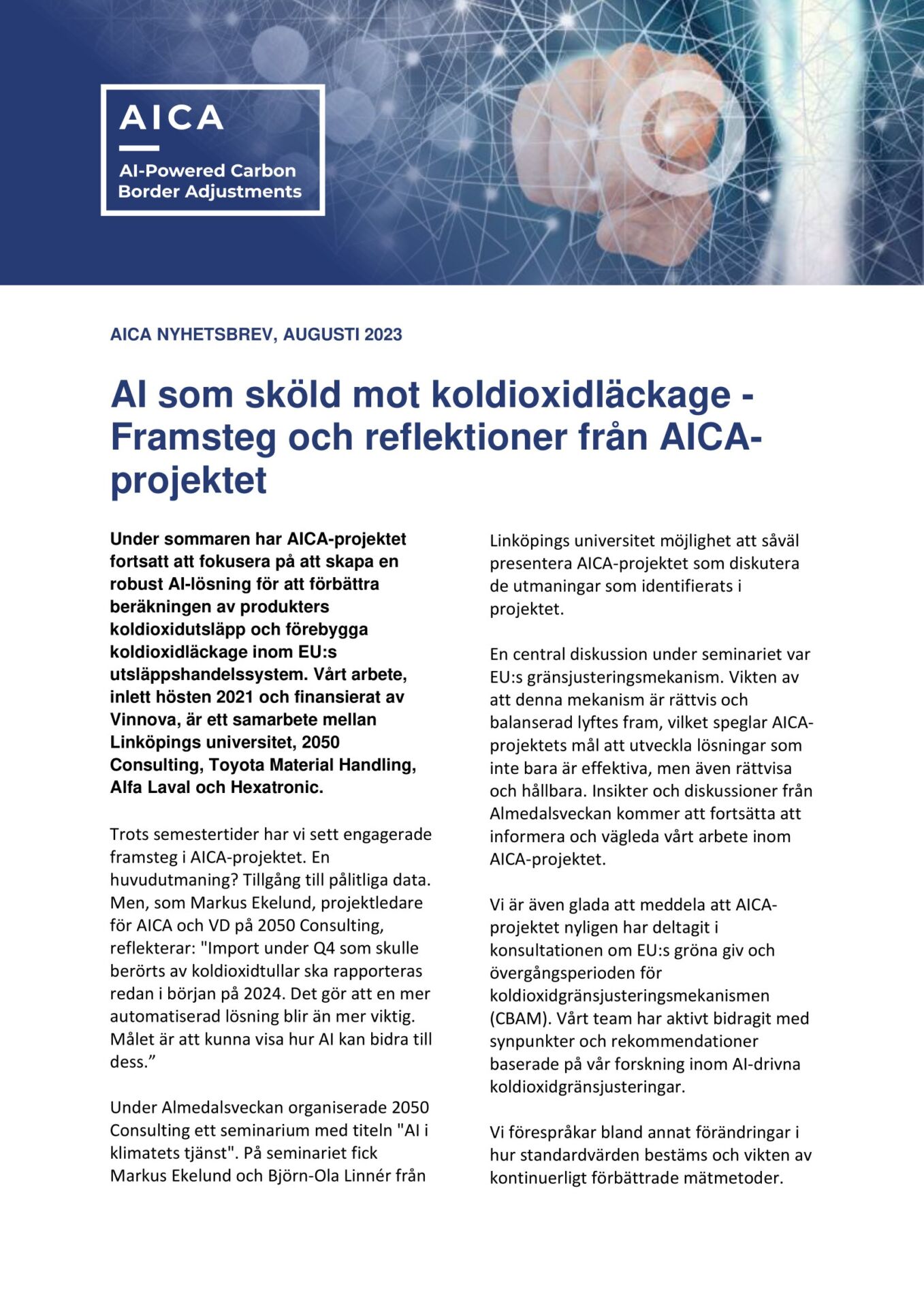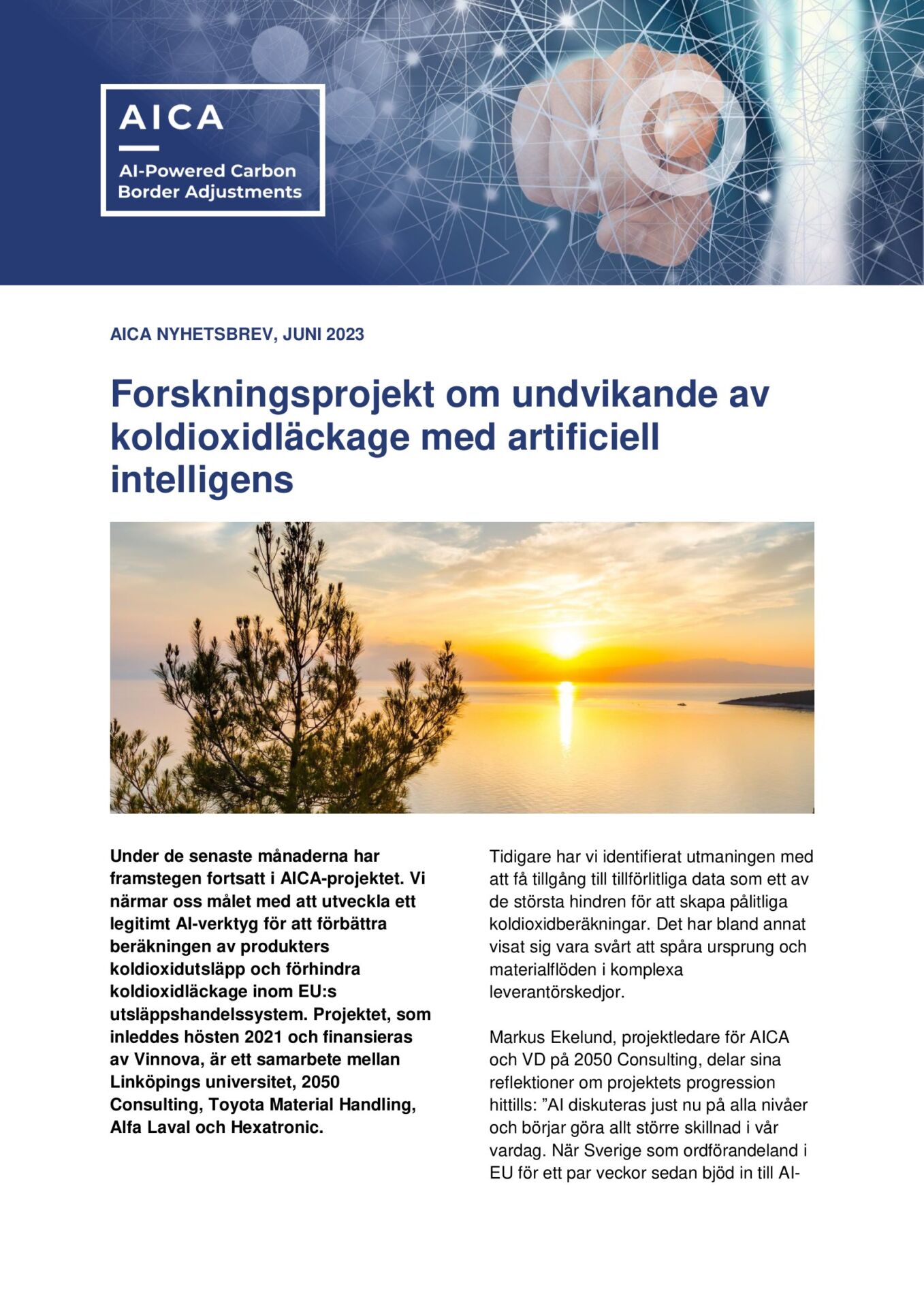
AI-Powered Carbon Border Adjustments
2050 Consulting, Alfa Laval, Toyota Material Handling, Linköping University and Hexatronic are partnering in the AI-Powered Carbon Border Adjustments research project. The purpose of the project is to investigate how Artificial Intelligence (AI) can be used to prevent carbon dioxide leakage in the EU’s emissions trading system.
Within the research project, it is investigated how an AI system can contribute to the implementation of the carbon border adjustment mechanism (CBAM) proposed by the EU. An AI-prototype is developed that must be efficient and reliable enough to be perceived as legitimate by international trading partners, as well as by business within the EU. The research project is financed by Vinnova, in consultation with Formas and the Energy Agency, and within the call for proposals “AI in the service of the climate”.
Project time: 2021 — 2024
Total budget: 9.135.560 SEK
More about the project
The purpose of the project is to enable stringent policy mechanisms to avoid carbon leakage between countries and thereby support the implementation of the Paris agreement, fulfilled with the following research questions:
How can an AI system be designed, capable of producing and validating LCAs for products assembled and produced in Sweden, EU and the World, with sufficient precision and interpretability for carbon border adjustments?
What type, quantity, and quality of data will be required for machine learning to empower such an AI system and enable reliable and bias-free LCA predictions?
What requirements are put on the AI system for the LCA emission calculations to be regarded as legitimate, in terms of transparency, equality and effectiveness, in international governance and by industrial actors?
The research will also touch on questions about how such an AI system can handle uncertainty, precision, interpretation of data and fairness. The project, which runs from 2021 to 2024, is divided into five different work packages that include data collection, design and development of machine learning systems and studies of legitimacy and feasibility.
The hope is that a prototype can be developed that can automatically perform life cycle analysis and calculations based on publicly available data on climate footprints such as the Environment Product Declaration as well as information on the energy system in the current manufacturing country.
The project will contribute to creating more transparency in the reporting of a large number of products and in the longer term make it easier for the EU to introduce import fees for carbon dioxide in line with current WTO regulations.
News from the project
Contact
For more information about the project, contact AICA:s project coordinator Anna Nyquist










